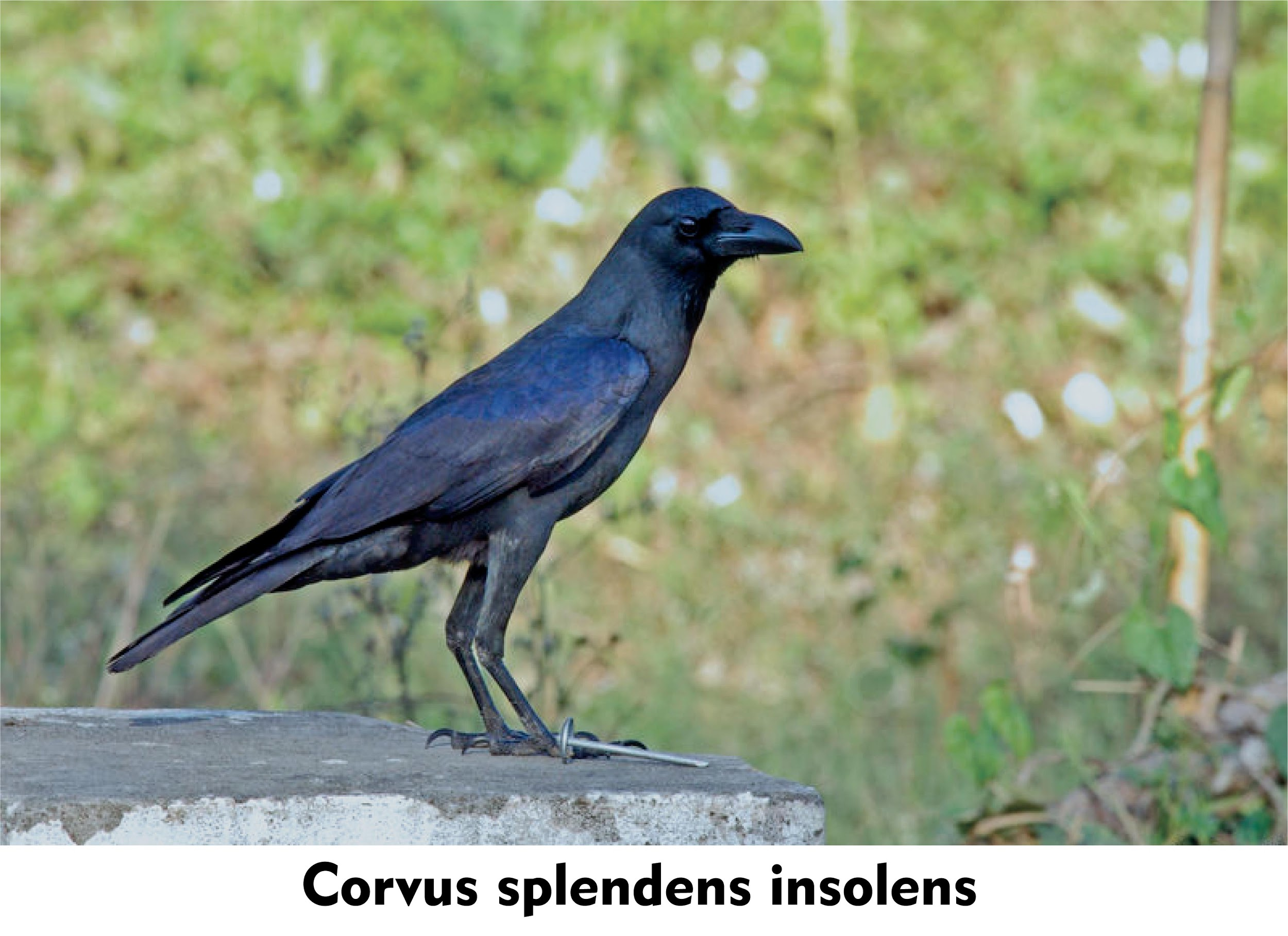
Corvus splendens insolens is the subspecies of crow found in
(a)Myanmar
(b)India
(c)Pakistan
(d)Srilanka
Answer
576.3k+ views
Hint: Bangladesh and India borders this country to its northwest and lies in the monsoon region of Asia. Its environment and ecosystems are much preserved due to its slow economic growth. The country covers a total area of 678,500 square kilometres (262,000 sq mi).
Complete answer:
The house crow is the common name of Corvus splendens insolens. It is a subspecies of crow and belongs to the family Corvidae. It is the darkest crow in color and lacks the grey collar. Corvus splendens insolens is found in the Myanmar country. The species has the capacity to spread quickly all over the tropics. It can make use of resources with great flexibility. It appears to be associated with humans, and no population has been recorded to exist independently without humans. It is also estimated that it can persist in some coastal areas in southern and northwestern Europe.
Additional Information: -The house crow was added to the list of Invasive Alien Species of Union concern in the year 2016.
-It feeds largely on refuse around human habitations, small reptiles, and mammals. Other animals such as insects and other small invertebrates, eggs, nestlings, grain, and fruits are also considered as their food. They have also been observed snatching baby squirrels, by swooping in the air. Most food is taken from the ground, but also the trees. They are highly opportunistic birds and can survive on nearly anything edible. These birds can be spotted near marketplaces and garbage dumps, looking for scraps. They have also been observed eating sand after feeding on carcasses.
So, the correct answer is, ‘Myanmar.’
Note: The house crow can be seen breeding in some trees in the local environment. They make several nests in the same tree and occasionally nest on public infrastructure such as telephone towers, electric poles, etc. It lays 3–5 eggs in a nest made of sticks.

Complete answer:
The house crow is the common name of Corvus splendens insolens. It is a subspecies of crow and belongs to the family Corvidae. It is the darkest crow in color and lacks the grey collar. Corvus splendens insolens is found in the Myanmar country. The species has the capacity to spread quickly all over the tropics. It can make use of resources with great flexibility. It appears to be associated with humans, and no population has been recorded to exist independently without humans. It is also estimated that it can persist in some coastal areas in southern and northwestern Europe.
Additional Information: -The house crow was added to the list of Invasive Alien Species of Union concern in the year 2016.
-It feeds largely on refuse around human habitations, small reptiles, and mammals. Other animals such as insects and other small invertebrates, eggs, nestlings, grain, and fruits are also considered as their food. They have also been observed snatching baby squirrels, by swooping in the air. Most food is taken from the ground, but also the trees. They are highly opportunistic birds and can survive on nearly anything edible. These birds can be spotted near marketplaces and garbage dumps, looking for scraps. They have also been observed eating sand after feeding on carcasses.
So, the correct answer is, ‘Myanmar.’
Note: The house crow can be seen breeding in some trees in the local environment. They make several nests in the same tree and occasionally nest on public infrastructure such as telephone towers, electric poles, etc. It lays 3–5 eggs in a nest made of sticks.

Recently Updated Pages
The number of solutions in x in 02pi for which sqrt class 12 maths CBSE

Write any two methods of preparation of phenol Give class 12 chemistry CBSE

Differentiate between action potential and resting class 12 biology CBSE

Two plane mirrors arranged at right angles to each class 12 physics CBSE

Which of the following molecules is are chiral A I class 12 chemistry CBSE

Name different types of neurons and give one function class 12 biology CBSE

Trending doubts
One Metric ton is equal to kg A 10000 B 1000 C 100 class 11 physics CBSE

What is 1s 2s 2p 3s 3p class 11 chemistry CBSE

Discuss the various forms of bacteria class 11 biology CBSE

State the laws of reflection of light

Explain zero factorial class 11 maths CBSE

An example of chemosynthetic bacteria is A E coli B class 11 biology CBSE




